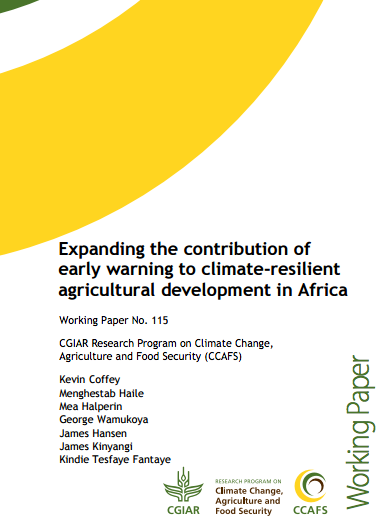Expanding the contribution of early warning to climate-resilient agricultural development in Africa

Extreme climate events can undermine agricultural and rural development progress. Even in years when extreme events do not occur, the uncertainty that results from climate-related risk is an impediment to sustainable intensification of agriculture and adoption of climate-smart agricultural production practices. Systems that provide early warning of climate extremes can reduce the adverse impacts of such events – if they are embedded in effective communication and linked to decision-making processes. However, there is a general consensus that early warning systems are not meeting their current potential to provide decision makers with timely information in a format that enables action. Recent failures to respond effectively to slowonset extreme climate events – particularly drought – have generally been attributed to failures in decisionmaking rather than failures in early warning.
Therefore, any investment in developing or improving early warning systems should be coupled with investments in improving communication and decision-making processes to maximize the benefit of early warning. In order to increase response, early warning systems must also tailor information for a broader set of actors ranging from global to community levels. Many institutions create early warning systems for their own operational purposes or share warnings broadly without regular feedback from stakeholders. Making appropriate early warning information available to decision-makers at a more local level can allow earlier, better targeted mitigation actions that may reduce long-term impacts of climate shocks on livelihoods, and reduce the need for emergency assistance later. Such an approach would require increased capacity at local levels and regular feedback to assure that the information provided is keeping pace with local dynamics.